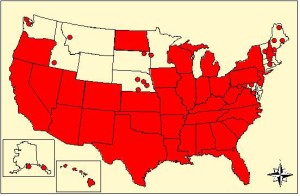The Asian longhorned beetle (ALB) is the target of most of APHIS’ spending on non-native, tree-killing insects and pathogens. I have been on the record for 18 years – representing a sequence of three organizations – supporting ALB eradication efforts. But other damaging pests do not get adequate attention. Much of the explanation is probably money – APHIS is inadequately funded. But why have the other tree-killers slipped from the attention of politically important constituencies? How do we reverse this situation so that needed actions are taken?
The ALB Eradication Effort
After consulting several sources — Haack 2009, periodic news releases by APHIS and the Ohio Department of Agriculture – I conclude that in the 20 years since ALB was detected in Brooklyn in 1996, US and Canadian authorities have removed at least 188,000 trees. Data on the numbers of high-risk trees treated with systemic pesticides are much less complete. However, it appears from these same sources that U.S. and state authorities have treated more than 800,000 trees. Easily available data do not reveal how many of the treated trees were later found to be infested and therefore had to be cut down. I do hope agency and academic scientists are tracking that information – it is crucial to evaluating the efficacy of programs that allow treatment of “high risk” trees instead of removing them. A related issue is how many trees at early stages of infestation are missed by surveyors.
In carrying out the eradication program over 20 years, APHIS has spent about $600 million (Santos pers. comm.; US Department of the Interior 2016). Canada has spent far less – something more than $35 million Canadian (Marcotte pers. comm.).
In FY15 APHIS allocated $41.6 million to eradication of the Asian longhorned beetle [US DoI 2016]. This represented 77% of all funds in the agency’s “Tree and Wood Pests” account. The President’s FY17 budget calls for cutting funding for this account from its current level of $54 million to $46 million. If Congress accepts President’s proposed cut and funding for ALB eradication remains at the FY15 level, the proportion allocated to this one pest would rise to 90% of the total account. Perhaps APHIS anticipates spending less on the ALB program. APHIS has announced (USDA news release) that it will no longer apply systemic pesticides to “high-risk” trees in order to prevent beetle infestation. Instead, the program will focus on identifying and removing infested trees. I worry that with ALB outbreaks still present in Massachusetts, New York, and Ohio, any reduction in the program would be risky. (Official USDA budget documents don’t provide an explicit funding level for the ALB program, so we can’t be sure whether cuts are planned.)
Certainly, ALB eradication deserves continued priority. The beetle kills trees in 15 botanical families – especially maples and birches, which constitute much of the hardwood forest reaching from Maine to Minnesota, as well as urban trees worth an estimated $600 billion. Furthermore, adequately funded eradication efforts have proven to be a successful tactic.
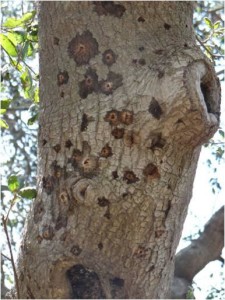 PSHB damage to coast live oak;
PSHB damage to coast live oak;
photo by Akif Eskalen, UCRiverside
Other tree-killing insects are being ignored
However, other species need to be addressed, too. If these efforts are to succeed, they need more than the leftovers from funding ALB work.
Some funds are available through the Farm Bill Section 10007 “Plant Pest and Disease Management and Disaster Prevention Program” grant program. Still …
The Asian gypsy moth demands constant attention from APHIS. That effort is ramping up in response to moth detections in the Pacific Northwest. Apparently most of the funds for this program are from the Farm Bill Section 10007 program – but how long can this funding source be sustained? (See my blog posted earlier in March.)
Efforts to eradicate the spotted lanternfly (Lycorma delicatula) from Pennsylvania continue. The lanternfly attacks 25 or more plant species that grow in the Mid-Atlantic states. Concern focuses on grapes and fruit trees including apples and stone fruits. (The lanternfly prefers tree of heaven (Ailanthus) (PA DoA) but the insect’s host range is too wide to use it as a biocontrol agent for this widespread invasive plant. The spotted lanternfly entered country as egg masses attached to imported slate. It has been detected in four counties in southeastern Pennsylvania ]
What is – or should be – done about the 20 species of non-native wood-boring and bark insects that have been detected for the first time in the United States over just the past decade? While some appear not to be causing major damage, that impression could be wrong. The polyphagous shot hole borer was first detected in California in 2003 ]. It has taken over 10 years to determine that the PSHB and very similar Kuroshio shot hole borer transport fungi that threaten over 300 plant species, including trees that make up the majority of trees in riparian areas and half of the trees planted in urban areas across southern California.
Tree species in other warm regions of the country such as the Gulf Coast are also at risk if the shot hole borers’ spread is not curtailed. Examples include native boxelder and American sweetgum; as well as such widely planted ornamentals as camellia, mimosa, and Japanese maple. The insects and the Fusarium pathogen that they transport might also attack other species in the oak, maple, sycamore, holly, and willow genera which grow in the Southeast.
Other funding needs
APHIS needs to continue efforts to slow the spread of and reduce impacts on forests from the emerald ash borer, including by continuing to support programs aimed at curtailing movement of firewood. While the emerald ash borer has spread to 25 states, significant areas of natural and urban ash forests remain pest-free, especially in the deep South, Great Plains, and Pacific Coast. APHIS might also continue funding research aimed at improving both biological control and breeding of ash trees resistant to the emerald ash borer. See my blog about resistance breeding posted in February.
APHIS must also have sufficient resources to respond when additional insect introduction are detected – which seems likely since an estimated 35 shipping containers entering the country each day carry wood packaging infested by damaging pests. [see my blogs about wood packaging posted in July and August 2015 and the SWPM fact sheets.
And – as the AGM and spotted lanternfly examples demonstrate – the risk of introduction of tree-killing insects goes far beyond imports of “agricultural” commodities – even when those commodities are widely interpreted to include wooden crates and pallets.
Please re-visit my blogs of 22 February to learn the details of funding issues and then contact your Representative and Senators to support increased funding for APHIS.
Posted by Faith Campbell
SOURCES
Haack, R.A., F. Herard, J. Sun, J.J. Turgeon. 2009. Managing Invasive Populations of Asian Longhorned Beetle and Citrus Longhorned Beetle: A Worldwide Perspective. Annu. Rev. Entomol. 2010. 55:521-46.
Marcotte, M. Canadian Food Inspection Agency. Email to F.T. Campbell 29 April, 2013.
Pennsylvania Department of Agriculture: Agriculture Secretary Urges Consumers to Help Keep Foreign Insect from Spreading through Pennsylvania, United States News for Immediate Release Nov. 3, 2014
Santos, R. USDA Animal and Plant Health Inspection Service. Email to F.T. Campbell, April 12, 2013.
USDA APHIS NEWS RELEASE 3/28/16
Contact: Rhonda Santos, (508) 852-8044, rhonda.j.santos@aphis.usda.gov
Suzanne Bond, (301) 851-4070, suzanne.m.bond@aphis.usda.gov
U.S. Department of the Interior. 2016. Safeguarding America’s lands and waters from invasive species: A national framework for early detection and rapid response, Washington D.C., 55p.
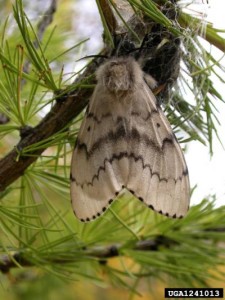
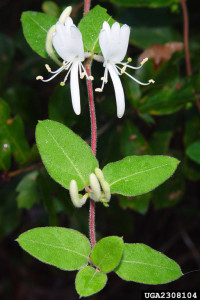
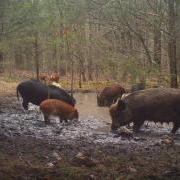 feral hogs in Missouri
feral hogs in Missouri